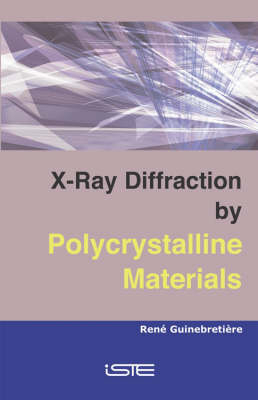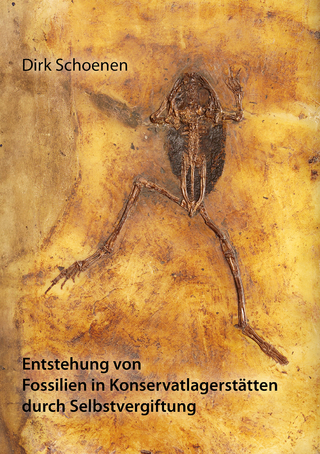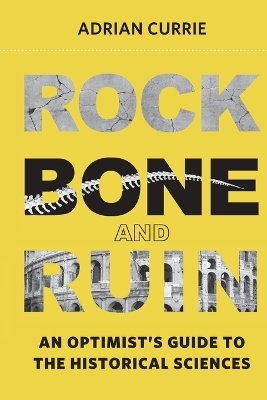
X-Ray Diffraction by Polycrystalline Materials
ISTE Ltd and John Wiley & Sons Inc (Verlag)
978-1-905209-21-7 (ISBN)
This book presents a physical approach to the diffraction phenomenon and its applications in materials science. An historical background to the discovery of X-ray diffraction is first outlined. Next, Part 1 gives a description of the physical phenomenon of X-ray diffraction on perfect and imperfect crystals. Part 2 then provides a detailed analysis of the instruments used for the characterization of powdered materials or thin films. The description of the processing of measured signals and their results is also covered, as are recent developments relating to quantitative microstructural analysis of powders or epitaxial thin films on the basis of X-ray diffraction.
Given the comprehensive coverage offered by this title, anyone involved in the field of X-ray diffraction and its applications will find this of great use.
René Guinebretière is a senior lecturer at the Ecole Nationale Supérieure de Céramiques Industrielles in Limoges, France, and teaches X-ray diffraction. His research activities are the study of materials using X-ray diffraction at the SPCTS International Laboratory in France.
Preface xi
Acknowledgements xv
An Historical Introduction: The Discovery of X-rays and the First Studies in X-ray Diffraction xvii
Part 1. Basic Theoretical Elements, Instrumentation and Classical Interpretations of the Results 1
Chapter 1. Kinematic and Geometric Theories of X-ray Diffraction 3
1.1. Scattering by an atom 3
1.1.1. Scattering by a free electron 3
1.1.1.1. Coherent scattering: the Thomson formula 3
1.1.1.2. Incoherent scattering: Compton scattering [COM 23] 6
1.1.2. Scattering by a bound electron 8
1.1.3. Scattering by a multi-electron atom 11
1.2. Diffraction by an ideal crystal 14
1.2.1. A few elements of crystallography 14
1.2.1.1. Direct lattice 14
1.2.1.2. Reciprocal lattice 16
1.2.2. Kinematic theory of diffraction 17
1.2.2.1. Diffracted amplitude: structure factor and form factor 17
1.2.2.2. Diffracted intensity 18
1.2.2.3. Laue conditions [FRI 12] 22
1.2.3. Geometric theory of diffraction 23
1.2.3.1. Laue conditions 23
1.2.3.2. Bragg's law [BRA 13b, BRA 15] 24
1.2.3.3. The Ewald sphere 26
1.3. Diffraction by an ideally imperfect crystal 28
1.4. Diffraction by a polycrystalline sample 33
Chapter 2. Instrumentation used for X-ray Diffraction 39
2.1. The different elements of a diffractometer 39
2.1.1. X-ray sources 39
2.1.1.1. Crookes tubes 41
2.1.1.2. Coolidge tubes 42
2.1.1.3. High intensity tubes 47
2.1.1.4. Synchrotron radiation 49
2.1.2. Filters and monochromator crystals 52
2.1.2.1. Filters 52
2.1.2.2. Monochromator crystals 55
2.1.2.3. Multi-layered monochromators or mirrors 59
2.1.3. Detectors 62
2.1.3.1. Photographic film 62
2.1.3.2. Gas detectors 63
2.1.3.3. Solid detectors 68
2.2. Diffractometers designed for the study of powdered or bulk polycrystalline samples 72
2.2.1. The Debye-Scherrer and Hull diffractometer 73
2.2.1.1. The traditional Debye-Scherrer and Hull diffractometer 74
2.2.1.2. The modern Debye-Scherrer and Hill diffractometer: use of position sensitive detectors 76
2.2.2. Focusing diffractometers: Seeman and Bohlin diffractometers 87
2.2.2.1. Principle 87
2.2.2.2. The different configurations 88
2.2.3. Bragg-Brentano diffractometers 94
2.2.3.1. Principle 94
2.2.3.2. Description of the diffractometer; path of the X-ray beams 97
2.2.3.3. Depth and irradiated volume 103
2.2.4. Parallel geometry diffractometers 104
2.2.5. Diffractometers equipped with plane detectors 109
2.3. Diffractometers designed for the study of thin films 110
2.3.1. Fundamental problem 110
2.3.1.1. Introduction 110
2.3.1.2. Penetration depth and diffracted intensity 111
2.3.2. Conventional diffractometers designed for the study of polycrystalline films 116
2.3.3. Systems designed for the study of textured layers 118
2.3.4. High resolution diffractometers designed for the study of epitaxial films 120
2.3.5. Sample holder 123
2.4. An introduction to surface diffractometry 125
Chapter 3. Data Processing, Extracting Information 127
3.1. Peak profile: instrumental aberrations 129
3.1.1. X-ray source: g1(epsilon) 130
3.1.2. Slit: g2(epsilon) 130
3.1.3. Spectral width: g3(epsilon) 131
3.1.4. Axial divergence: g4(epsilon) 131
3.1.5. Transparency of the sample: g5(epsilon) 133
3.2. Instrumental resolution function 135
3.3. Fitting diffraction patterns 138
3.3.1. Fitting functions 138
3.3.1.1. Functions chosen a priori 138
3.3.1.2. Functions calculated from the physical characteristics of the diffractometer 143
3.3.2. Quality standards 144
3.3.3. Peak by peak fitting 145
3.3.4. Whole pattern fitting 147
3.3.4.1. Fitting with cell constraints 147
3.3.4.2. Structural simulation: the Rietveld method 147
3.4. The resulting characteristic values 150
3.4.1. Position 151
3.4.2. Integrated intensity 152
3.4.3. Intensity distribution: peak profiles 153
Chapter 4. Interpreting the Results 155
4.1. Phase identification 155
4.2. Quantitative phase analysis 158
4.2.1. Experimental problems 158
4.2.1.1. Number of diffracting grains and preferential orientation 158
4.2.1.2. Differential absorption 161
4.2.2. Methods for extracting the integrated intensity 162
4.2.2.1. Measurements based on peak by peak fitting 162
4.2.2.2. Measurements based on the whole fitting of the diagram 163
4.2.3. Quantitative analysis procedures 165
4.2.3.1. The direct method 165
4.2.3.2. External control samples 166
4.2.3.3. Internal control samples 166
4.3. Identification of the crystal system and refinement of the cell parameters 167
4.3.1. Identification of the crystal system: indexing 167
4.3.2. Refinement of the cell parameters 171
4.4. Introduction to structural analysis 172
4.4.1. General ideas and fundamental concepts 173
4.4.1.1. Relation between the integrated intensity and the electron density 173
4.4.1.2. Structural analysis 175
4.4.1.3. The Patterson function 177
4.4.1.4. Two-dimensional representations of the electron density distribution 180
4.4.2. Determining and refining structures based on diagrams produced with polycrystalline samples 183
4.4.2.1. Introduction 183
4.4.2.2. Measuring the integrated intensities and establishing a structural model 184
4.4.2.3. Structure refinement: the Rietveld method 185
Part 2. Microstructural Analysis 195
Chapter 5. Scattering and Diffraction on Imperfect Crystals 197
5.1. Punctual defects 197
5.1.1. Case of a crystal containing randomly placed vacancies causing no relaxation 198
5.1.2. Case of a crystal containing associated vacancies 201
5.1.3. Effects of atom position relaxations 203
5.2. Linear defects, dislocations 205
5.2.1. Comments on the displacement term 207
5.2.2. Comments on the contrast factor 210
5.2.3. Comments on the factor f(M) 212
5.3. Planar defects. 212
5.4. Volume defects 218
5.4.1. Size of the crystals 218
5.4.2. Microstrains 226
5.4.3. Effects of the grain size and of the microstrains on the peak profiles: Fourier analysis of the diffracted intensity distribution 231
Chapter 6. Microstructural Study of Randomly Oriented Polycrystalline Samples 235
6.1. Extracting the pure profile 236
6.1.1. Methods based on deconvolution 237
6.1.1.1. Constraint free deconvolution method: Stokes' method 238
6.1.1.2. Deconvolution by iteration 242
6.1.1.3. Stabilization methods 244
6.1.1.4. The maximum entropy or likelihood method, and the Bayesian method 244
6.1.1.5. Methods based on a priori assumptions on the profile 245
6.1.2. Convolutive methods 246
6.2. Microstructural study using the integral breadth method 247
6.2.1. The Williamson-Hall method 248
6.2.2. The modified Williamson-Hall method and Voigt function fitting 250
6.2.3. Study of size anisotropy 252
6.2.4. Measurement of stacking faults 255
6.2.5. Measurements of integral breadths by whole pattern fitting 257
6.3. Microstructural study by Fourier series analysis of the peak profiles 262
6.3.1. Direct analysis: the Bertaut-Warren-Averbach method 262
6.3.2. Indirect Fourier analysis 268
6.4. Microstructural study based on the modeling of the diffraction peak profiles 270
Chapter 7. Microstructural Study of Thin Films 275
7.1. Positioning and orienting the sample 276
7.2. Study of disoriented or textured polycrystalline films 279
7.2.1. Films comprised of randomly oriented crystals 279
7.2.2. Studying textured films 285
7.2.2.1. Determining the texture 285
7.2.2.2. Quantification of the crystallographic orientation: studying texture 289
7.3. Studying epitaxial films 292
7.3.1. Studying the crystallographic orientation and determining epitaxy relations 292
7.3.1.1. Measuring the normal orientation: rocking curves 293
7.3.1.2. Measuring the in-plane orientation: phi-scan 295
7.3.2. Microstructural studies of epitaxial films 300
7.3.2.1. Reciprocal space mapping and methodology 304
7.3.2.2. Quantitative microstructural study by fitting the intensity distributions with Voigt functions 307
7.3.2.3. Quantitative microstructural study by modeling of one-dimensional intensity distributions 312
Bibliography 319
Index 349
| Erscheint lt. Verlag | 15.3.2007 |
|---|---|
| Verlagsort | London |
| Sprache | englisch |
| Maße | 160 x 241 mm |
| Gewicht | 694 g |
| Themenwelt | Naturwissenschaften ► Geowissenschaften ► Mineralogie / Paläontologie |
| Technik ► Maschinenbau | |
| ISBN-10 | 1-905209-21-5 / 1905209215 |
| ISBN-13 | 978-1-905209-21-7 / 9781905209217 |
| Zustand | Neuware |
| Haben Sie eine Frage zum Produkt? |
aus dem Bereich


